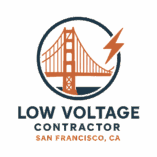5 Costly Mistakes to Avoid in San Francisco Low Voltage Installations
Introduction
Low voltage installations in San Francisco are critical for modern offices, high-rises, and commercial spaces in San Francisco. These systems—encompassing network cabling, security cameras, access control, and audiovisual infrastructure—must be executed with precision. Mistakes can lead to operational disruptions, increased costs, and compromised safety. This guide highlights the five most common errors in low voltage installations and provides strategies to prevent them, helping businesses maximize efficiency, reliability, and long-term performance.
Table of Contents
- Planning Without a Comprehensive Site Assessment
- Using Substandard Materials or Equipment
- Neglecting Compliance and Local Codes
- Poor Cable Management and Labeling
- Inadequate Testing and Documentation
- Conclusion and Key Takeaways
- FAQs
Planning Without a Comprehensive Site Assessment
Failing to conduct a detailed site assessment before installation is a critical error. Proper planning involves:
- Assessing Building Layouts: Understanding floor plans, wall types, and access points
- Identifying Network Requirements: Determining bandwidth, device density, and future expansion needs
- Evaluating Environmental Factors: Considering interference, temperature, and moisture for equipment placement
Consequences: Inadequate planning can result in insufficient cabling, device placement issues, and costly retrofits.
Expert Tip: Engage certified low voltage contractors to perform a full pre-installation audit to align system design with business needs.
Using Substandard Materials or Equipment
Selecting low-cost or uncertified cables, connectors, or devices can compromise system performance.
- Risks: Signal degradation, reduced lifespan, network downtime, security vulnerabilities
- Recommended Standards:
- Cabling: Cat6A or higher for modern data networks
- Security Systems: UL-listed cameras and access control devices
- Networking Hardware: Enterprise-grade switches and patch panels
Industry Insight: According to BICSI, substandard components are among the leading causes of low voltage system failures in commercial projects.
Neglecting Compliance and Local Codes
San Francisco enforces strict electrical and building regulations for low voltage installations.
- Key Regulations:
- California Electrical Code (CEC): Safety standards for wiring and grounding
- City Permits: Required for significant commercial installations
- Accessibility Compliance (ADA): Placement of devices must meet accessibility standards
Potential Consequences: Fines, legal liability, and delays in business operations.
Pro Tip: Always work with licensed low voltage contractors familiar with local codes and permitting processes.
Poor Cable Management and Labeling
Messy or unorganized cabling can create long-term operational headaches.
- Common Issues:
- Difficulty troubleshooting network or security issues
- Increased risk of physical damage to cables
- Confusion during expansions or maintenance
Best Practices:
- Use labeled patch panels and color-coded cables
- Employ structured cable pathways with trays, conduits, and cable ties
- Document all cable runs, endpoints, and device connections
Insight: According to industry studies, organized cabling reduces maintenance time by up to 40% and improves system reliability.
Inadequate Testing and Documentation
Failing to test systems or maintain detailed documentation is a frequent and costly mistake.
- Testing Includes:
- Network throughput and signal integrity
- Security camera functionality and access control reliability
- Power supply and backup verification for low voltage systems
- Documentation Should Include:
- Detailed schematics and diagrams
- Equipment specifications and serial numbers
- Maintenance schedules and warranty information
Consequences: Unverified installations lead to undetected issues, expensive troubleshooting, and system downtime.
Expert Advice: Implement a checklist-based quality assurance protocol before project handover.
Conclusion
Low voltage installations in San Francisco demand meticulous planning, high-quality materials, regulatory compliance, organized cabling, and thorough testing. By implementing the right low voltage solutions and avoiding these five common mistakes, businesses can ensure operational reliability, reduce costs, and build a safe, scalable infrastructure for future growth.
Actionable Steps:
- Conduct comprehensive site assessments before any installation
- Invest in certified, high-quality materials and devices
- Ensure compliance with all local and state regulations
- Implement proper cable management and labeling systems
- Test, document, and maintain systems diligently
FAQs
Q1: What is considered a low voltage installation?
A1: Low voltage installations typically involve systems operating at 50V or less, such as network cabling, security cameras, access control, and audiovisual equipment.
Q2: How can I ensure my installation meets San Francisco codes?
A2: Work with licensed low voltage contractors and obtain necessary permits while adhering to the California Electrical Code (CEC) and city-specific requirements.
Q3: Why is cable labeling so important?
A3: Proper labeling simplifies troubleshooting, prevents downtime, and makes future expansions easier and safer.
Q4: Can using cheaper components save money in the long run?
A4: No. Substandard materials often fail prematurely, causing more costs in repairs, replacements, and operational disruptions.
Q5: How often should low voltage systems be tested?
A5: Systems should be tested immediately after installation and periodically (at least annually) to ensure ongoing reliability and performance.
